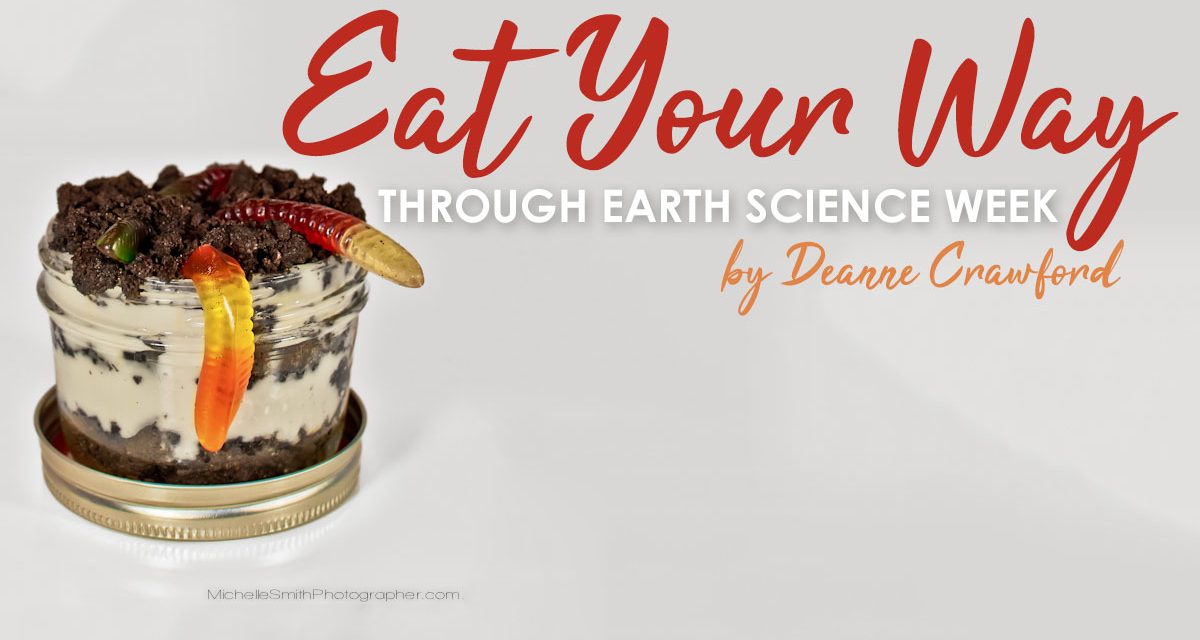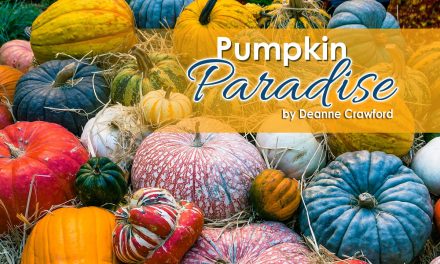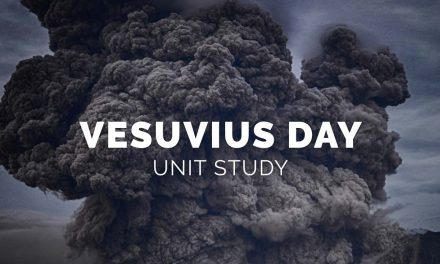Welcome to our October unit study in celebration of Earth Science week (October 14-20). Teaching earth science through food is a fun way to engage the senses and provide a fresh perspective for learning. Interspersed in this study are delectable recipes, and underlined words, which are hyperlinks to child-friendly videos and articles to encourage learning. You will notice this month a fresh perspective on our unit study with career path exploration links for older children. As always, supervised online time is recommended.
Earth Science covers all aspects of how the earth works. Introduce the power behind understanding earth science (Please note old earth dating). The study of the Earth is often divided into spheres: atmosphere, biosphere, hydrosphere, and lithosphere. To help your children remember the spheres, introduce them to this song: (Geosphere is used in lieu of Lithosphere; the terms are often used interchangeably) and the interactive Scholastic Study Jam. Before we study each sphere individually, explore Earth Science at Ducksters for Kids. Ask them to pick one of the subject areas to learn more and ask them to narrate back to you what they have learned. Narration is an excellent way to assess learning. If you are unfamiliar with this skill, Simply Charlotte Mason or Classical Conversations offer helpful ideas.
The atmosphere is the air around the earth. Made up of different gases, the atmosphere forms a protective layer around earth that keeps it warm and protects it from the sun’s radiation. NASA Climate for Kids and KidsGeo.com are excellent introductions for children. Our first yummy recipe is a simple Atmosphere Pie Chart that uses M&Ms®. The popular career path for future scientists interested in the atmosphere is meteorology and climatology. These are oftentimes used interchangeably, although each has unique responsibilities. Children and adults are fascinated by weather, even if not pursuing a career in the field. Capitalize on this natural curiosity through the online and local courses offered by the National Weather Service.
The biosphere is vast, encompassing the area around the planet Earth where life exists. Geography for Kids (evolutionary content) offers an interactive, thorough look at our biosphere and olders will appreciate The Biosphere explanation on YouTube. Want to learn more about the Biosphere? Visit Biosphere 2 in Arizona! If you are not able to travel to Arizona, go inside Biosphere 2 and learn its history. The biosphere includes all of the biomes on earth. Learn about the different biomes of the earth from Free School. Due to the encompassing nature of the biosphere, there are numerous recipe options related to the biosphere. Make an Ocean Ecosystem Dessert with Jell-O®, red licorice, gummy fish and mint leaves. Have a food sampling party with tropical rain forest foods like cinnamon, bananas, pineapple, sesame, ginger, coconut, cashews and many others. Options abound for children interested in pursuing a biome-related career: Forest Ranger, (Forest Service coloring book for grades 3-6), Ecologist, Agricultural Engineer, Wildlife Management, and countless other options.
This brings us to the hydrosphere, or the area of Earth covered by water. It includes the oceans, glaciers, lakes, and rivers. Ask your children how much of the earth is covered by water. Scientists have projected that 71% of the Earth’s surface is water covered, with 96% of this water in oceans. Learn more about our watery planet at the USGS Water Science School or NASA Space Place on YouTube. Introduce your children to the hydrologic cycle (evolutionary content). Dive into the Hydrologic (water) cycle through the Interactive Water Cycle available for three learner levels: Beginner, Intermediate and Advanced. Create a sugar cookie map of the water cycle using your favorite cookie recipe, frosting, coconut, whip cream, etc. You will find recipes and instructions for the sugar cookie water cycle and edible rocks linked at the end. If your children love water, explore the various career paths available. Science Buddies Hydrologist provides a wealth of information from what they do to project ideas. Meet a Hydrologist with the US Forest Service. Passionate about the deep seas, learn what it takes to become an oceanographer.
Our final sphere is our lithosphere. The lithosphere is the the solid and rigid outer layer of our planet. It includes the crust and part of the upper mantle that contains rigid rocks. If your children are not familiar with earth layers, take time to read Earth’s Composition from Ducksters. Geologists are scientists who study the lithosphere. Scientific theories divide the earth into giant sections called tectonic plates that glide over the mantle. Teach your children the tectonic plates with this upbeat children’s song. Following this theory, scientist study volcanoes, earthquakes, mountain formation, and ocean floor changes. Younger children may understand the earth’s structure with an apple. Take a large apple and cut it in half so that all the parts show. The seeds will represent the core; the darker area around the seed would be the outer core; the meat of the apple represents the mantle; and the peel displays the crust. Create an Earth Model Parfait. Essential in our lithosphere study are rocks. Take time to learn about the three types of rocks on YouTube or KidsGeo.com. Head outdoors and find the different types of rocks. Organize and identify the discovered rocks using a field guide or an online resource like geology.com. Edible rocks are always a hit in my family. Find . As you can imagine, career opportunities abound. Geologist, Seismic Geophysicist (specifically for earthquakes), Tsunami Geologist, and Petroleum Geologist are examples.
Thank you for joining us this month. While a bit different from our other unit studies, we are hopeful that your family will enjoy learning even more. Take the learning to the next level and use the included recipes to practice math facts. Double, triple or cut in half any of the recipes to practice skills. We would love your feedback. Feel free to email me at dcrawford@rainbowresource.com
~Deanne





